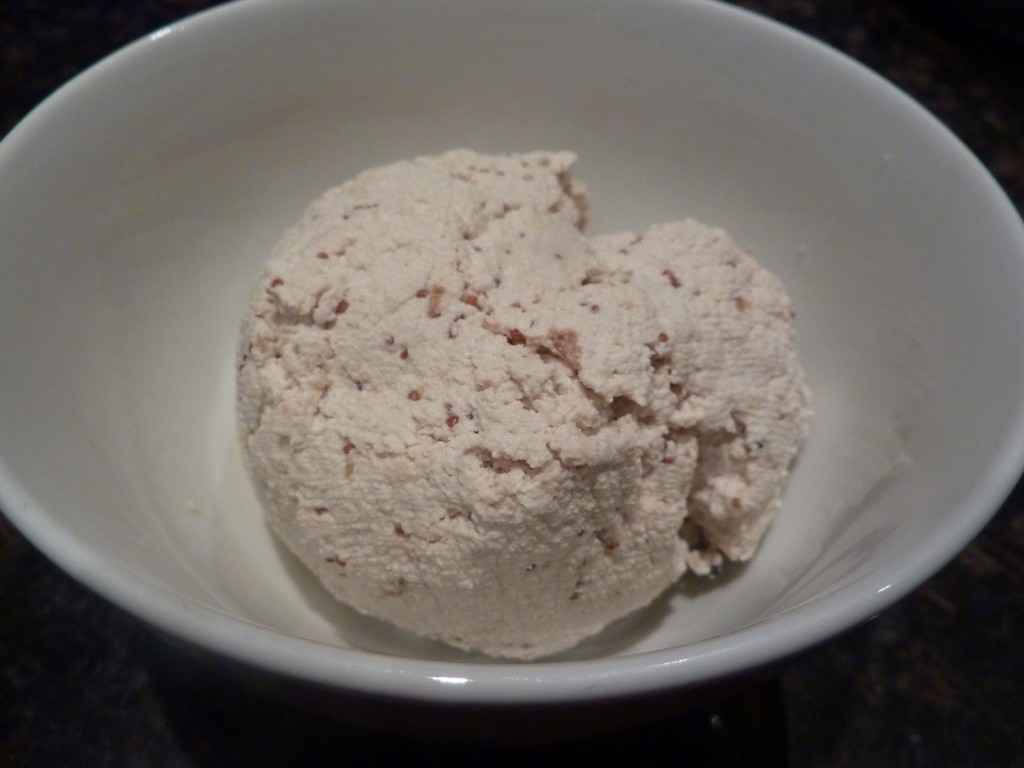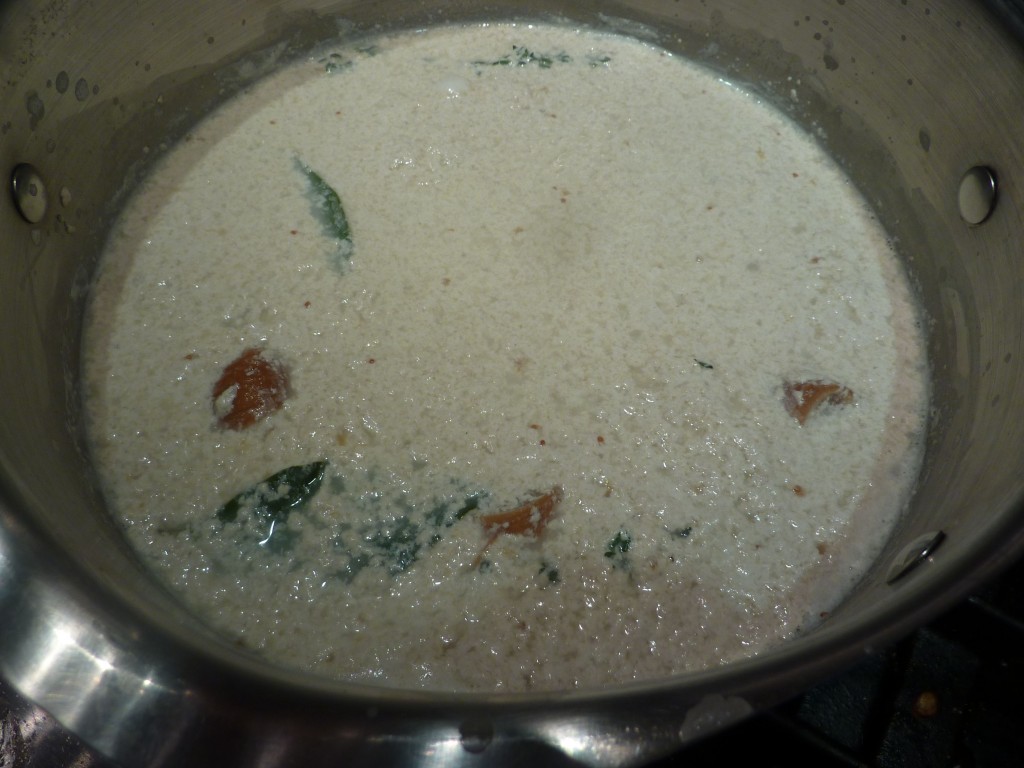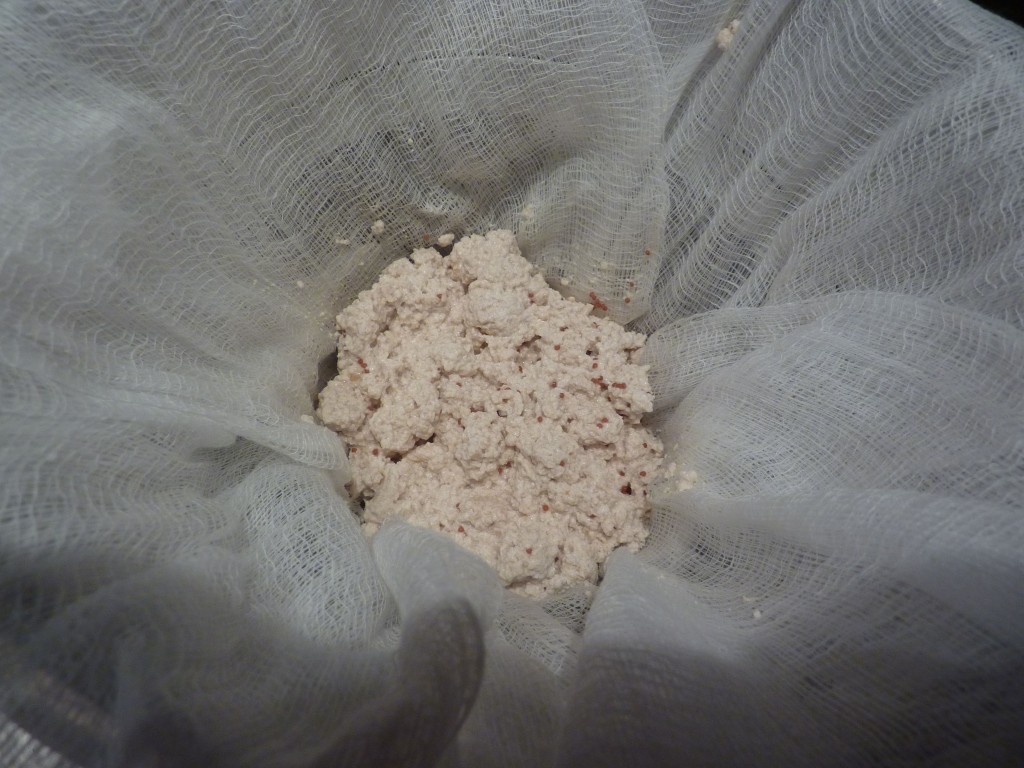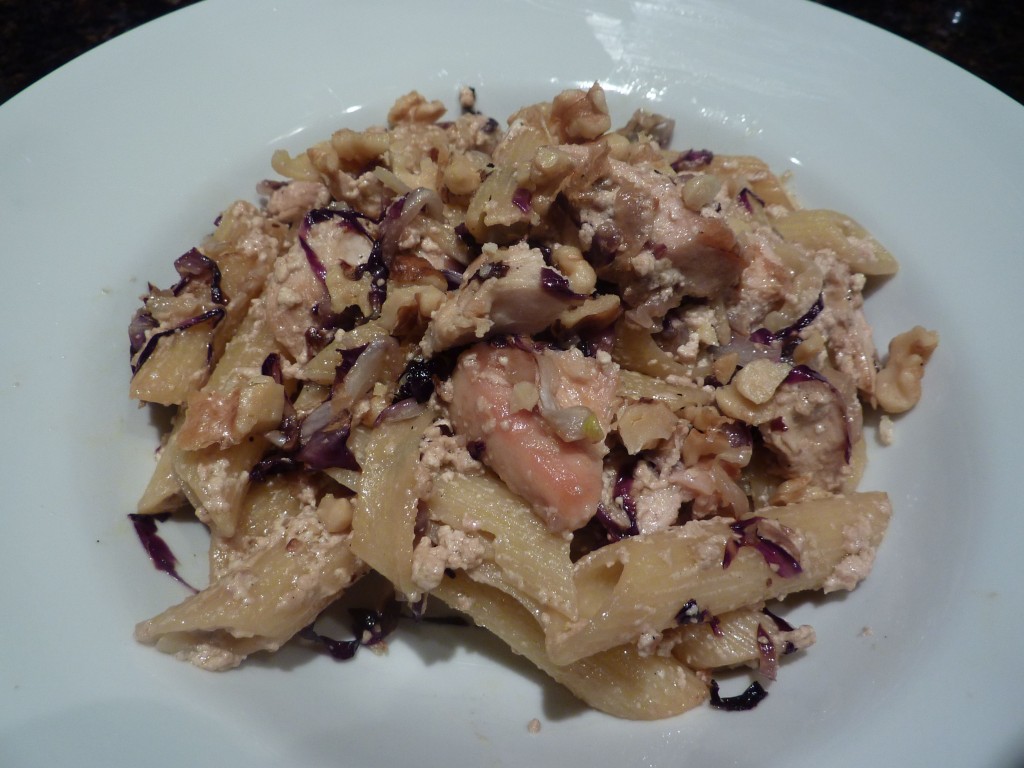
Make your own ricotta cheese? Are you crazy? That is the reaction I usually see when this possibility is first introduced. But continue reading, and you’ll soon be a convert. You can actually make ricotta from two simple ingredients, and you’ll be done in less time than it will take you to run out to the grocery store and buy it!
The ingredients: whole milk and some sort of acid (vinegar, lemon juice)
How: Heat milk. Add acid. The milk will curdle. Strain curds from liquid. You are done.

We introduced homemade ricotta with Jody Adams leading the way on our Chefs on Bikes tours last year in the Veneto. Everyone was amazed at how simple it was; the most difficult part was scrounging around in the borrowed kitchens trying to locate an adequate substitute for a strainer and cheesecloth (I think we ended up with paper towels, or coffee filters.) We stuffed zucchini blossoms with it in June, and in September we served it for dessert with roasted fresh local plums with walnuts.
Now to fess up a bit, this is not exactly a true ricotta cheese as you would find in Italy. The high quality ricotta cheese we found there are actually produced from the whey, the liquid that is drained off after the milk has curdled. When the protein rich whey is heated, protein particles fuse and create a curd, which is then drained and becomes ricotta. In Italy, most ricotta cheeses are produced with sheep, goat or water buffalo milk whey, while in the US cow’s milk whey is most commonly used. But this homemade whole milk version is delicious, and I love the idea of being able to control the quality of the ingredients – I opt for a locally produced whole milk, as opposed to a supermarket organic. The latter must be UHT (ultra-high temperature) pasteurized, due to the required long shelf life. UHT milk is not recommended for home mozzarella production, as the processing interferes with the more solid curd production needed for that type of cheese. It will work for this type of ricotta, however.

I’ve continued to play with variations, experimenting with different flavors of vinegar and different ingredients to infuse flavor into the cheese. I’m also planning on trying some versions with non-cow’s milk, when I can get my hands on some. Here’s one version in which I used a fig flavored balsamic vinegar and added some dried figs which sit in the curds for a period of time to infuse some flavor into the cheese. I’ve got a few more varieties I want to explore, which I will post with recipes – I’d love to hear from anyone out there with your own discoveries!
Homemade Fig Ricotta
Makes 2 cups
1/2 gallon whole milk, preferably local
2 bay leaves
sprig thyme
9 dried figs, woody stem removed and quartered
2 tablespoon and 2 teaspoons fig vinegar (balsamic vinegar flavored with fig)
Kosher salt
Place milk, bay leaves, thyme, fig quarters and balsamic vinegar in a large saucepan and heat slowly over medium heat, stirring occasionally to keep the milk from burning. Eventually, milk will curdle. Most recipes call for the milk to be heated to 180°, using a thermometer to keep track of the temperature. This is a simmer, just below the boiling point. When the milk reaches 180°, you are instructed remove from the heat and stir in the vinegar. However, the milk will curdle as low as 165°, and if you are careful to keep an eye on it so it doesn’t boil over, you can do this without a thermometer. The milk will curdle when it reaches 165°, if you have added enough acid (vinegar). For the fig ricotta, allow to stand for 1 hour, to infuse the ricotta with the bay, thyme and figs.
Line a strainer with cheesecloth. Remove the bay leaves, thyme sprig and fig quarters from the saucepan containing the milk. Ladle the curds into the cheesecloth, allowing the clear liquid to drain away. Hang in the cheesecloth for 8-10 minutes, longer if you want drier ricotta. You can also gather the ricotta up in the cheesecloth to squeeze out some of the whey. Season with salt.
So, now what do we do with it?

Pasta with Chicken, Radicchio, and Homemade Fig Ricotta with Walnuts
This is a quick pasta recipe I came up with to feature this great homemade ricotta. The combination of fig and radicchio and walnuts I love; I’ve used it on crostini as an appetizer. I’ve added some grilled chicken here as a way to work in some protein, but a vegetarian version would be just as tasty. I used regular white pasta, as that is what I had on hand, but a whole wheat pasta would be very nice in this.
Serves 4
2 boneless chicken breasts
kosher salt and freshly ground pepper
3 tablespoons extra virgin olive oil
1 small head radicchio, chiffonade (thinly sliced)
2 cloves garlic, minced
1/2 cup homemade fig ricotta
1 pound dried penne pasta, either white or whole wheat
1/4 cup walnuts, toasted and chopped
Preheat your grill. You can also bake or broil the chicken, if a grill is not available.
Season the chicken breasts with salt and pepper. Grill until cooked through. Allow to cool, then chop into 1/2 inch pieces.
Fill a large pot with water and bring to a boil over high heat.
While the water is heating, heat 1 tablespoon of the olive oil in a large saute pan. Add the radicchio and cook until wilted. Add the garlic and cook another minute. Add the chicken pieces. Turn off the heat while the pasta cooks.
Once the water is boiling, season with salt. Add the penne and cook until al dente. Reserve 1 cup of the pasta water, then drain the pasta and add to the chicken and radicchio.
Turn the heat back on to medium under the pasta and chicken. Add the ricotta and remaining olive oil and combine. If the pasta seems a bit too dry, add a bit of the pasta water – this will depend on how well you have drained your ricotta. Taste, and adjust the seasonings.

Pingback: Torta di Ricotta: Recipe Italiaoutdoors Bike Tours Italy | Italian Food, Wine, Health and Fitness